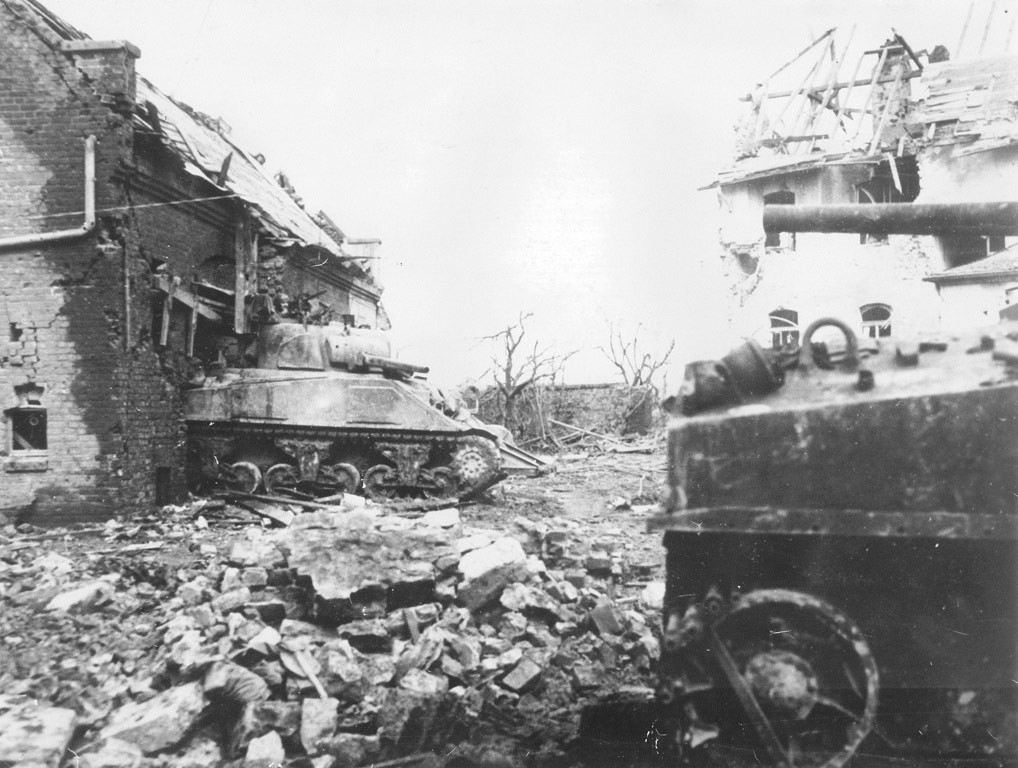With the landing in Normandy in June 1944, the Allies opened the second front against Germany, which Soviet leader Joseph Stalin had long demanded. The German troops suffered heavy losses, and gradually pulled out of France and Belgium, behind the fortifications on the border of the German Reich known as the ‘Westwall’, which the Allies, recalling a First World War structure, dubbed the ‘Siegfried Line’. On 12 September 1944, the first U.S. soldiers crossed the German border near the village of Roetgen outside of Aachen. But due to supply problems and the failure of the Allied ground-air offensive in the Netherlands known as Operation Market Garden, the Allied advance towards the Rhine was then halted.
The German forces which had to some extent fallen into disarray during the retreat, were able to regroup. The German ‘home front’ was mobilized and militarized, by means of terror and repression against the German population whenever necessary.
The Huertgen Forest consisted of thick woodland, bare hilltops and deep gorges. In the fall and winter, heavy rain and snowfall and a lack of roads made it extremely difficult to penetrate, either by foot or in vehicles. Nonetheless, the Allies pushed into the rough and unfamiliar terrain in order to secure their advance towards the Rhine. The battle proceeded from mid-September 1944 to mid-February 1945, and ended with an Allied victory which, however, cost numerous casualties on both sides. For the American G.I.s, the very name – with it’s first syllable, ‘hurt’ – became a byword for injury and death. To this day, hundreds of soldiers on both sides remain unaccounted for, and their remains continue to be found.
